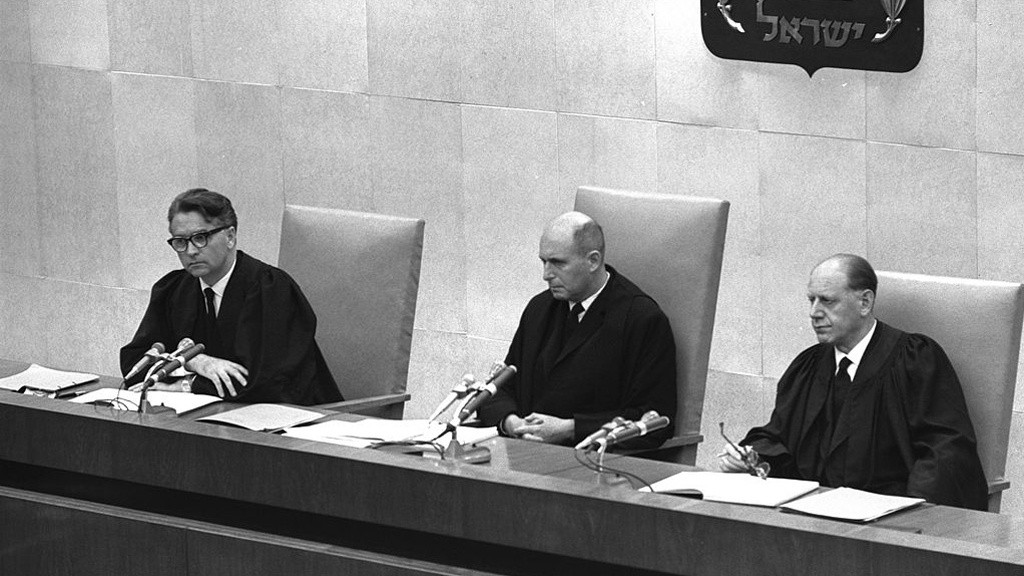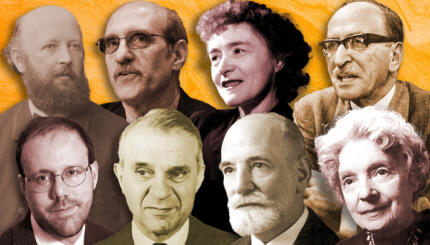Adolph Eichmann was born to a middle-class German family in 1906. He rose through the ranks of the Nazi party to become the senior lieutenant colonel responsible for the transportation of an innumerable amount of Jews to the death camps in Poland. Eichmann also facilitated and managed the use of gas chambers in the coordinated Nazi plan to enact the Final Solution, earning him the title “the architect of the Holocaust.”
Eichmann was arrested by the Allies at the end of World War II, but he escaped by assuming a different identity. He managed to spread a rumor of his suicide and was aided by former SS colleagues as he fled to Argentina. He lived there with his family for more than a decade under the pseudonym Ricardo Klement.
Capture and Trial
In 1960, Israeli intelligence was alerted to Eichmann’s identity by the CIA, which had received information from Simon Wiesenthal about Eichmann’s location in Buenos Aires. The capture was carried out non-violently by Mossad agents, who first had to track and positively identify him, all the while concealing their operation from the Argentine authorities.
Prime Minister David Ben Gurion, aware that the Argentine government had a history of protecting Nazis and was unlikely to agree to extradition, authorized his security agents to move on their own. The Argentine government knew nothing of the capture at the time. Afterward, when they brought this grievance to the UN, the matter was resolved peacefully.
With your help, My Jewish Learning can provide endless opportunities for learning, connection and discovery.
The agents smuggled Eichmann by plane to Jerusalem, where he faced charges of crimes against the Jewish people, crimes against humanity, and membership in organizations that the 1945-46 Nuremberg Trials had classified as criminal.
Eichmann was tried in 1961 in one of the most notorious trials in history. He sat for eight months in a bulletproof glass box in a Jerusalem courtroom and listened to all of the testimony against him. One hundred and eleven survivors testified with detailed eyewitness accounts of their experiences in the Holocaust, hundreds more attended the trial, and thousands of survivors worldwide followed the radio and television broadcasts.
Eichmann was found guilty on all counts and sentenced to death. On June 1, 1962 he was hanged. This was the only time that the death penalty was used in the history of the state of Israel.
Eichmann was prosecuted under the provisions of the Nazi and Nazi Collaborators Punishment Law, established in 1950 by Ben Gurion’s government. The trial was only possible because a sovereign Jewish state with its own political structure, legal system, and intelligence and security agencies existed. For the first time in history, the Jewish people had the means to bring about justice to those who persecuted them. Ben Gurion and other founders of the state saw this as an intrinsic value of Israel’s national identity.
Isser Harel, then director of the Mossad (Israel’s intelligence agency), summed up this notion when he described to his squad the importance of its undertaking: “For the first time in history the Jews would judge their assassins; and for the first time the world would hear, and the young generation in Israel would hear, the full story of the edict of annihilation against an entire people.”
The Trial in Israeli Discourse
The Eichmann Trial became the first time in Israeli history that the atrocities of the death camps were publicly discussed. Up until that point, some survivors had spoken of what they had endured, but without significant public impact. The Eichmann trial raised so much awareness that subsequent national conflicts were, and still are, interpreted in relation to the Holocaust as the most extreme of all Jewish catastrophes.
The survivors who followed the trial’s proceedings, as well as chief prosecutor Gideon Hausner, also viewed the trial as an opportunity to educate a younger generation of Israelis about the Shoah. Hausner called to the stand 25 witnesses to testify on child abuse, explaining his pedagogical rationale: “I wanted testimony about the fate of young men and women, so that our own young men and women would hear what happened.” Interestingly, historian Howard Sachar says the Eichmann trial was also an important educational moment for the younger generation of Germans, who learned through it about the guilt incurred by their parents.
While informing the youth in Israel — and abroad — about the legacy of the Holocaust, the trial also shifted how the Israeli public saw its nascent official power. Smart, aggressive Jews had captured, tried, and executed a war criminal–these were seen as heroic acts for a newly sovereign people.
Critique of the Trial
Most of the critical discourse about the Eichmann trial is linked to philosopher Hannah Arendt‘s controversial five-part report on the proceedings, “Eichmann in Jerusalem,” published initially in The New Yorker in early 1963. In her work, Arendt leveled criticism against the Israeli court, which in her opinion staged a “show trial” that built its case on what the Jews had suffered in the Holocaust and not on what Eichmann had actually done in his capacity as a Nazi.
Arendt wrote, “Justice demands that the accused be prosecuted, defended, and judged, and that all the other questions of seemingly greater import…be left in abeyance.” Many Jewish leaders objected to this, as well as Arendt’s claim that the European Jewish councils, called Judenrat, had collaborated with the Nazis in handpicking certain Jews for extermination. Even if this were true, Jewish Americans thought that this public knowledge might exacerbate anti-Jewish feelings.
Her work gained renown for its subtitle, “the Banality of Evil,” which referred to the absolute normalcy under which Eichmann and other Nazis committed their horrific crimes. Arendt concluded that Eichmann was not a vicious, blood-thirsty aggressor driven by hatred to exterminate the Jews, but a simple individual who operated unthinkingly, without imagination, following orders to organize transport to death camps.
As an unintelligent person, Arendt asserted, Eichmann had no innate ability to identify with the Jewish plight, and he entertained no compassion for them as humans. Because his actions were couched in the rational functioning of the Nazi bureaucracy, he was able to perform his job of killing just like any other position he had held.
Since Arendt post-trial films such as![]() The Man Who Captured Eichmann (1996) have attempted to portray Eichmann’s inscrutable psychology. In the recent book, Becoming Eichmann (2007), historian David Cesarani asserts that Eichmann is an understandable figure if we consider his full mental, social, and political context in a culture that allowed one people to become an abstract racial-biological threat.
The Man Who Captured Eichmann (1996) have attempted to portray Eichmann’s inscrutable psychology. In the recent book, Becoming Eichmann (2007), historian David Cesarani asserts that Eichmann is an understandable figure if we consider his full mental, social, and political context in a culture that allowed one people to become an abstract racial-biological threat.
Yet Arendt’s assessment of Eichmann still eclipses most other narratives of his character and life. For our post-war culture, Eichmann’s actions are regarded as the shocking, and yet predictable effect of totalitarianism on the human conscience.



